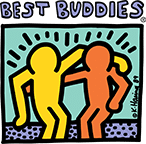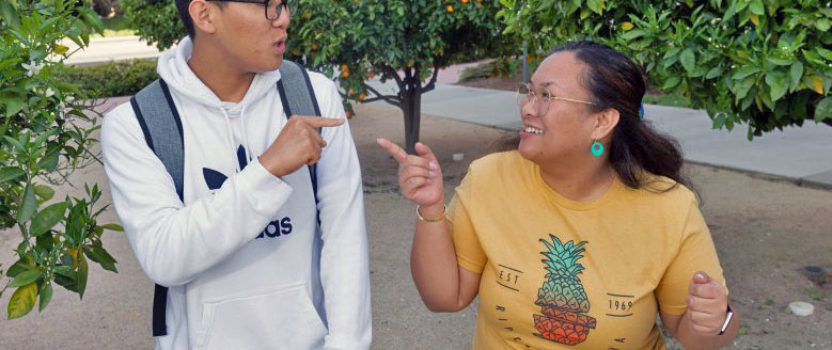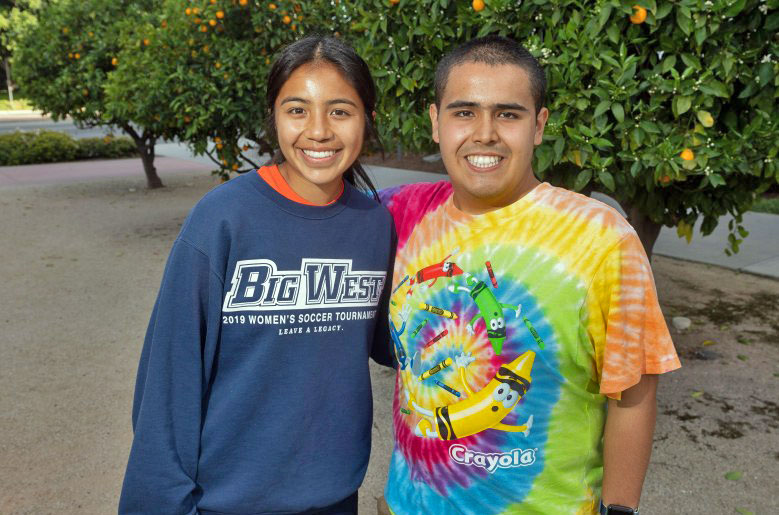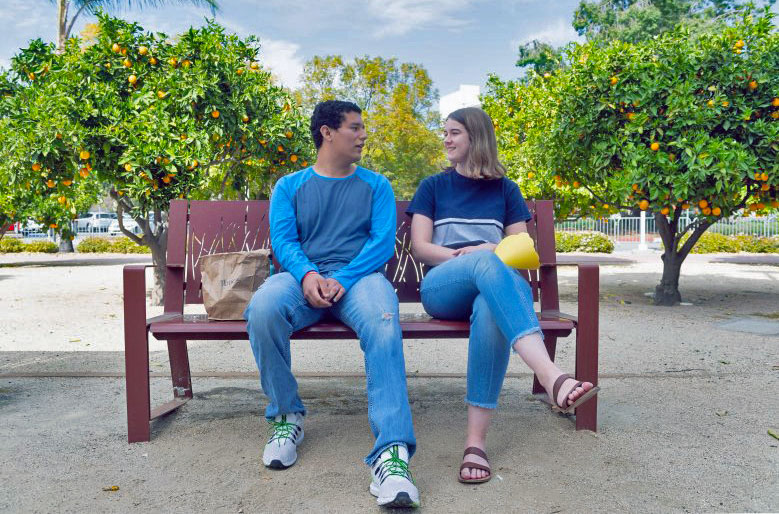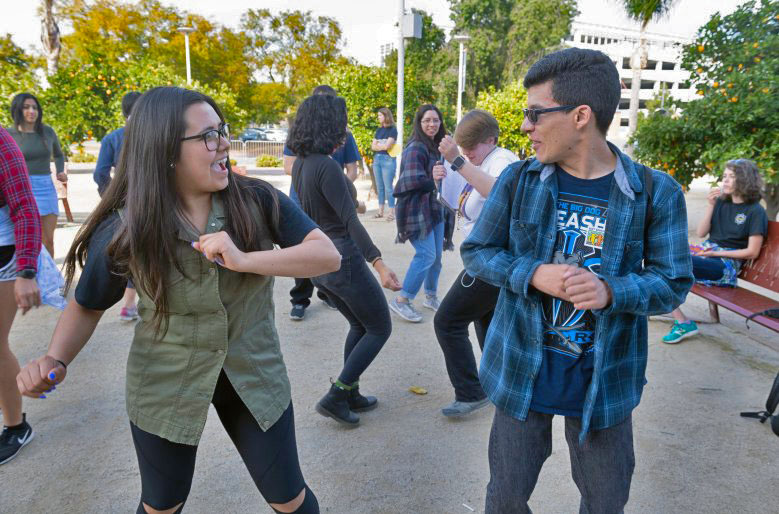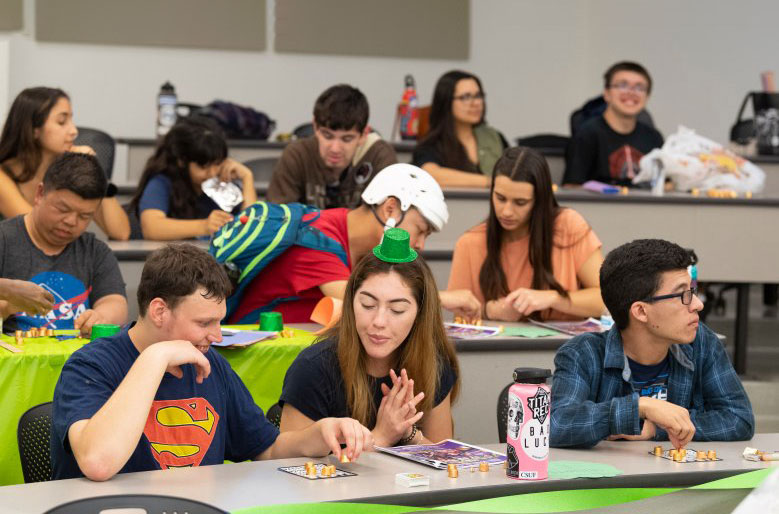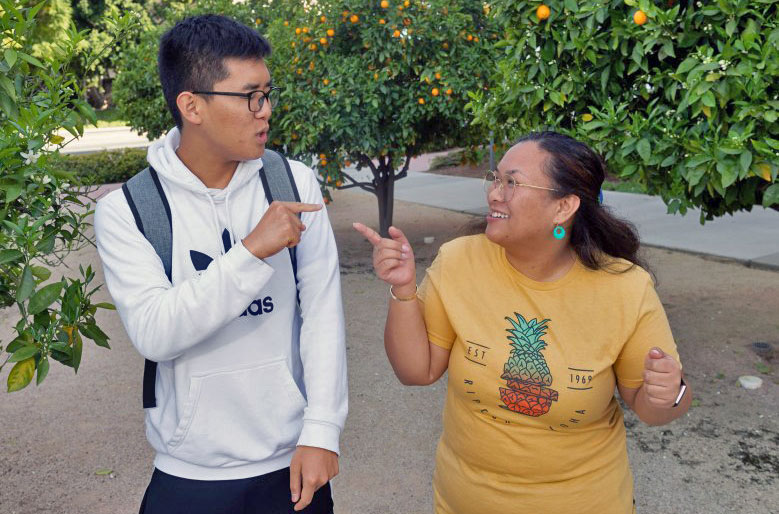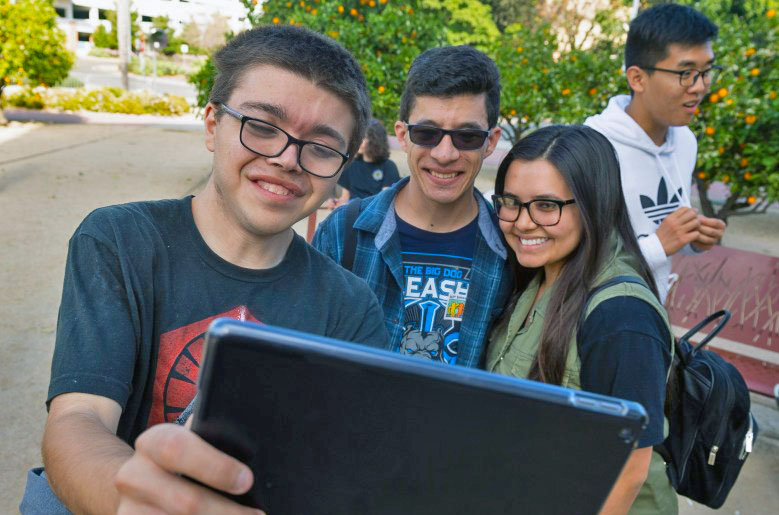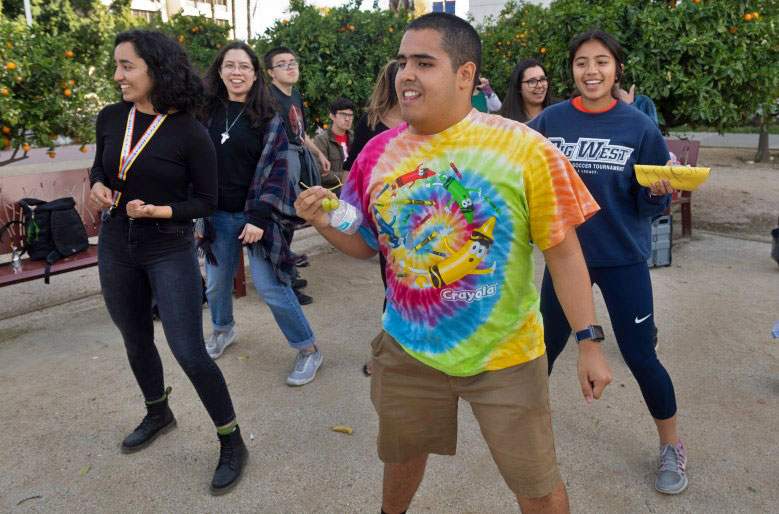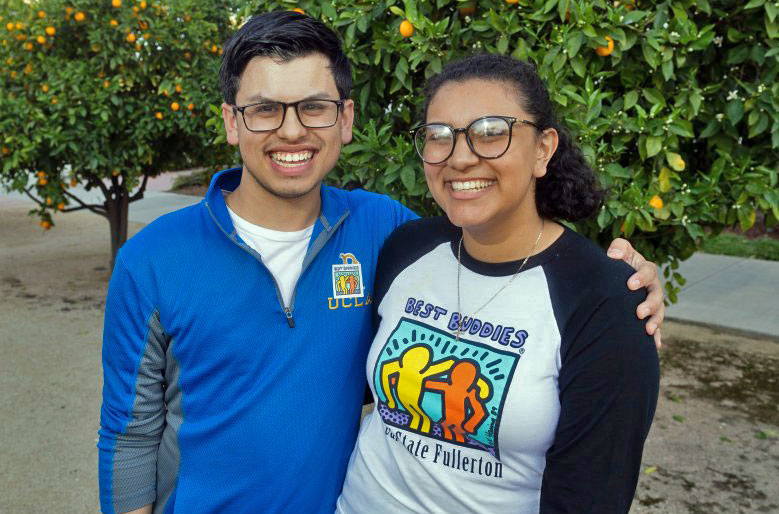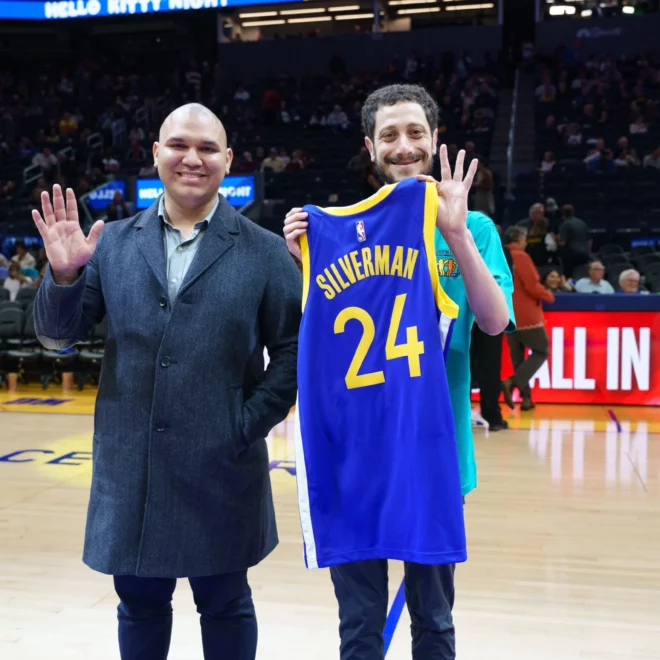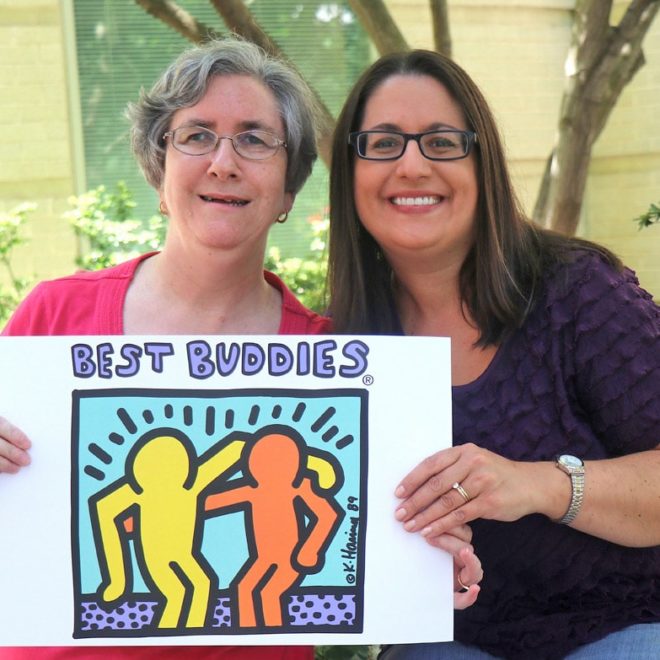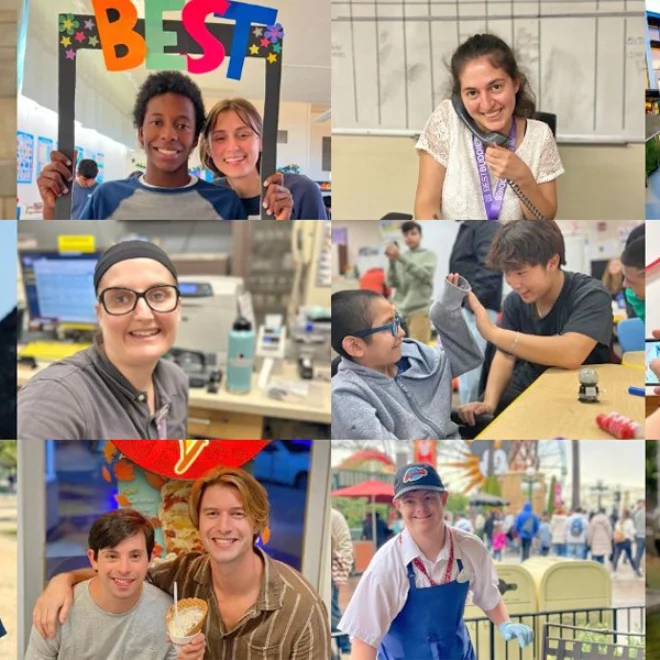The makeshift dance floor was a courtyard surrounded by orange trees outside Mihaylo Hall at Cal State Fullerton. The event was the first meeting of the new pairs of Best Buddies, a program at CSUF and across the country that breaks down social barriers and promotes friendship by pairing students with and without intellectual and developmental disabilities.
“We see inclusion as a tool that gets easier every time you use it,” said group president Cristina Narvasa, a fourth-year biological sciences major who helped found Best Buddies on campus in 2018. “It’s not only something you use with people with disabilities, but whenever you encounter someone with any kind of difference, whether it’s a racial background or cultural.”
At the social event on Friday, about 20 CSUF students met their buddies, who ranged in age from 18 to 22 and are part of a special transition program at Fullerton’s La Sierra High School that helps students with disabilities find jobs and move onto community college once they graduate from high school.
Aside from dancing to “Cupid Shuffle” and “We’re All in This Together,” the pairs chatted in the courtyard, had a scavenger hunt in a Mihaylo Hall classroom and played bingo.
The pairs are matched through a survey about the interests and hobbies of the students at La Sierra — which is just across the street from the university on State College Boulevard — as well as those of the CSUF students who volunteer for Best Buddies, Narvasa said.
Hannah San Gabriel, a second-year public health major at CSUF, was happy to reunite with Park, who she had been paired with last year.
“I personally learned so much through Best Buddies,” she said about her time with Park, who is a high-functioning individual with autism. “We went to socials and went out to Panda Express to get fried rice because that is his favorite.”
“I believe that we should be inclusive to everybody,” she said. “I live with someone with autism, a family member. So after that I wanted to be more involved in the community.”
“It was important to me that people could see that interacting with students with disabilities isn’t intimidating,” said Narvasa, who had several friends with autism growing up. “It’s something anyone can do. A lot of our students have never had a one-on-one genuine interaction with a person with a disability before.
“So this is a way to get exposed to that.”
Read the full article